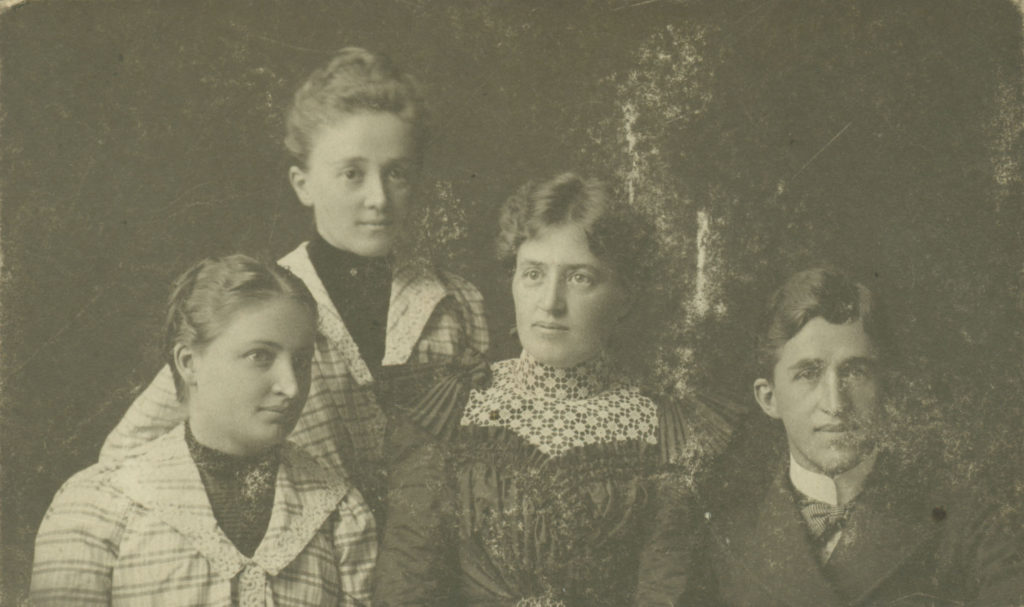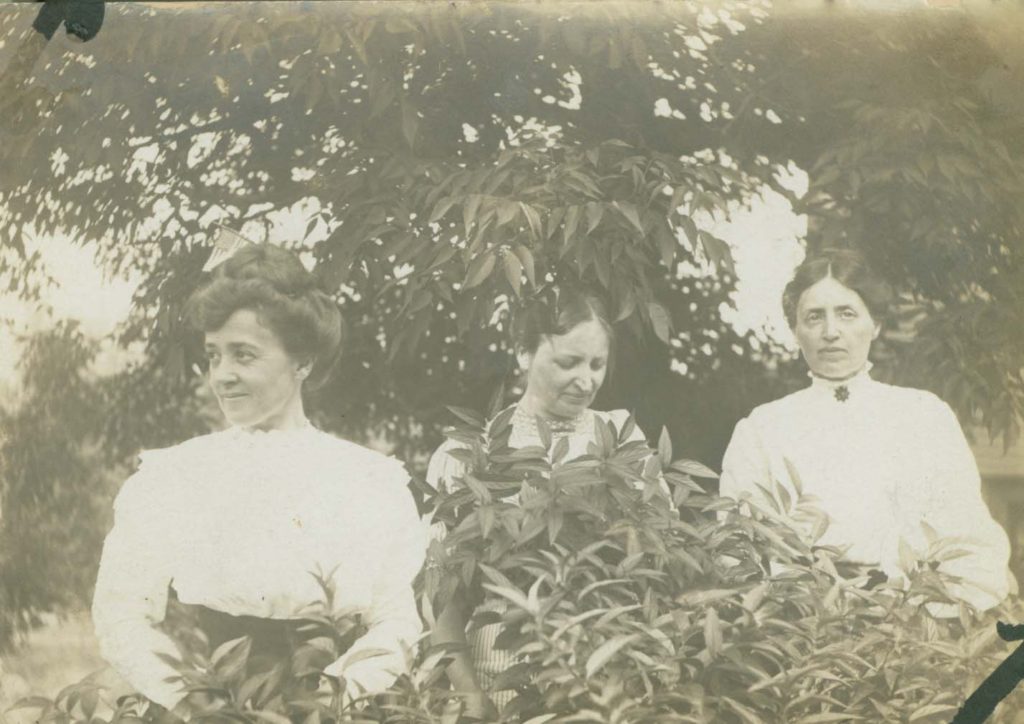Topsy’s Journal. Strictly private!
So begins Lydia Olsson’s diary. Olsson was an early female student at Augustana College in Rock Island, IL, and the five diaries now held by Augustana Special Collections document her life on campus. I encountered Olsson’s diaries in the archives nearly a decade ago. Reading them changed my path in life.

In the summer of 2010, I was a rising senior at Augustana College. Built near the banks of the Mississippi River, Augustana is a typical liberal arts college. And I was a typical liberal arts student. Majoring in history, English, and German, I planned to become an archivist and was applying to graduate programs for the next fall. In the meantime, I worked in Augustana Special Collections, processing archives and exploring the stacks.
Over the summer I worked longer hours, and during my breaks I liked to browse the collections for something interesting, like a cache of love letters or a salacious diary (being an archivist means you are basically a professional snoop, reading private documents that people left behind). Augustana Special Collections is full of such things, given that it holds many of the personal and professional papers of students, faculty, and staff from throughout the school’s 160 years of history.
One day I was looking through the finding aid for the Olof Olsson family papers and came across a listing for “Diaries, 1892-1896.” Olsson was the third president of Augustana College and these diaries were written by Lydia, his third child. Intrigued, I pulled the appropriate box out of the stacks and opened the first book.
Topsy’s Journal. Strictly private!
Journal kept by Lydia Olsson of 18.
“Gather ye rosebuds while ye may, Old time is still a-flying, And this same flower that smiles to-day. To-morrow may be dying.” [1]
“Keep true to the dreams of thy youth.” [2]

Topsy was Olsson’s nickname for herself and, as I found by examining the rest of the diaries, she liked to begin each book with a couple of mottoes or quotes. Reading on, I was immersed in the daily life of a young woman attending Augustana College, just as I was doing almost 120 years later. She took a variety of courses, had a robust social life, and was close to her family. She joked about the young men on campus who were vying for the attention of their fairer classmates, thought seriously about the role of religion in her life, and contemplated her future.
Was at Sarah’s for supper and then we went to Chapel together. Mahnquist stared at us and smiled a long while, which made us nearly croak. I told Sarah I could see my picture in his greasy hair. Everybody has gone to bed and here I am sitting writing such nonsence. I am wicked! (January, 29, 1893) [3]
Mia and I were talking about marriages . . . Mia herself don’t want to marry, and I well, I truly havn’t made up my mind if I do or not. Some day when I get old and sensible I am going to think over every thing and see what conclusion I come to. The first question is: Do I? and will I ever regret it? The second: Who to? and do I love him with all my heart and soul, or is it a fancy. 3rd: Is this the one that Providence has picked out for me? 4: – Will we always love the same? (December 22, 1893)
The diaries resonated strongly with me and I began to research what life was like for a young woman attending college in the 1890s. Looking deeper into the archives, I kept coming across letters and diaries written by the young women of Augustana. Their stories were a different kind of history, one that I hadn’t encountered in class. Forget kings and wars and important dates, these were ordinary people living ordinary lives. National and international events appeared on occasion, but they weren’t at the center of the narrative.
Mia was piling wood this morning, so Emil Lofgren went by and he helped her, so did I. Some went skating on the pond this morning. There don’t seem much to thank for now as Harrison didn’t become elected! (November 24, 1892) [4]
I consumed books and articles about life writing, learning that diaries, letters, and journals were often the only outlets for women’s writing. I checked out piles of published journals and correspondence written by women, from Virginia Woolf and Mary Boykin Chesnut to more obscure writers. Why hadn’t we read these sorts of sources in my history classes?
For the first time, I became interested in something I recognized as women’s history. It sounds odd to say that now, but at the time I didn’t know this was an area of study. Of course, I had learned about many fascinating women in class, but they were mostly queens, presidents’ wives, or other “notable” women. And I encountered them in published sources: history textbooks, newspaper articles, political cartoons, and government documents. In rare cases I read a speech or a letter, but never anything that dwelled deeply on their private lives or how they experienced the world around them.

Reading Lydia Olsson’s diaries changed my idea of what history could be and of who I could learn about. It’s thanks to Olsson that I’m back in graduate school, earning a degree in women’s history. I hope that by sharing Olsson’s words and story with others I can help broaden the scope of what we consider history worth telling.
And hereby endeth this chapter. Hoping to sow better seed in the future I close and zeal my book. – Topsy – (January 16, 1893)
Learn more about my research into Olsson’s life.
Resources
- Boaden, Ann. Light and Leaven: Women Who Shaped Augustana’s First Century. Rock Island, IL: Augustana Historical Society, 2011.
- Bunkers, Suzanne L. In Search of Susanna. Iowa City: University of Iowa Press, 1996.
- Huff, Cynthia Anne. Women’s Life Writing and Imagined Communities. London: Routledge, 2005.
- Inscribing the Daily: Critical Essays on Women’s Diaries. Edited by Suzanne L. Bunkers and Cynthia A. Huff. Amherst, MA: The University of Massachusetts Press, 1996.
- Sinor, Jennifer. The Extraordinary Work of Ordinary Writing: Annie Ray’s Diary. Iowa City, IA: University of Iowa Press, 2002.
- More suggestions can be found on this webliography. Fair warning that it hasn’t been updated since 2012.
Notes
[1] The opening stanza of Robert Herrick’s “To the Virgins, to Make Much of Time.”
[2] A quote from the German dramatist and poet Friedrich von Schiller.
[3] Olsson’s original spelling, grammar, and word choice are retained in these quotes.
[4] Olsson is referring to the 1892 United States presidential election between incumbent Benjamin Harrison and Grover Cleveland.
A version of this post was originally published on the Re/Visionist blog on October 25, 2019.